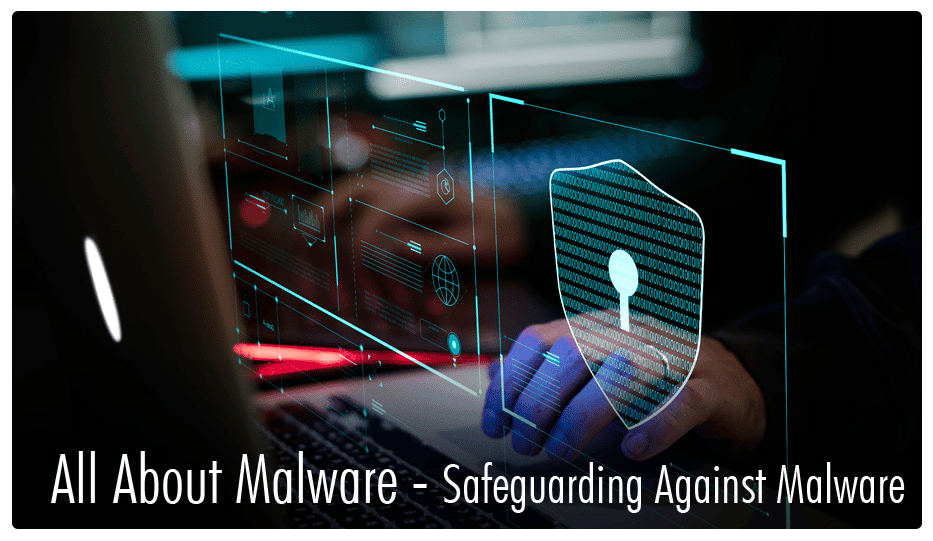
All About Malware – Safeguarding Against Malware
This is Part Three of the Three Part Series of Malware Blogs.
Till now, we have learned what a malware is, and the different types of malware that can cause damage to your system. In the last instalment of this blog series, we will go over some ways you can avoid becoming a victim of a malware attack.
Approaches to malware security
When dealing with malware, there are two practices you can follow to protect yourself.
- Upgrading your knowledge about malware and its outspread
- Using tools designed to protect yourself
What can I do at a personal level?
You read the news, and you understood that with simple common sense, you can steer clear of malware attacks. Right? Wrong! Unfortunately, as we’ve discussed in the previous sections of this blog — and it is worth repeating here again — cyber criminals are becoming more cunning and manipulative. They know exactly the kind of words to use as bait. The things we are going to go over shortly may seem simple and hard to miss, but often that is not the case. You will often find yourself in situations of urgency or in scenarios where immediate response is needed. This moment of hurry is the entry point for most malware attackers. So now, we will see five things you can do at a personal level to secure yourself.
Don’t get involved with any strangers on the internet, no matter how realistic the sense of security they establish. Warning bells should go off in your head when any person or form asks for sensitive information.
- Make sure your downloads are safe. Ask yourself if you really need that song, or that app or that file even if it means browsing through some shady looking websites.
- Avoid using pirated software or surfing pirated websites.
- Make sure all security updates have been installed; holes in the patches are often exploited by attackers.
- Learn the basics of firewall protection and set strict rules to filter out any potential threats.
- Allow ad-blockers and anti-viruses to help make your security stronger.
Technical security
Simply being careful might prove inefficient against a malware attacks. Business security at the other end may not always be top-notch so even good, trusted sources can sometimes bear hidden malware attachments. It is best not to leave it up to the other side to serve only safe content. That is why using some tools and security measures on your device/machine is vital.
Following are some tools to help you.
McAfee
McAfee Total Protection is a well-known tool to protect against all kinds of cyber threats. They have divided their services into subscription packages, each package offering solid protection benefits. The best thing about McAfee is that a subscription can blanket you across all devices.
Norton
Norton products provide an all-round protection for your devices. They, too, have packages available for subscription. They also offer VPN facilities. At the bottom of their products page, they have also published links to their performance tests and case studies.
MalwareBytes
MalwareBytes boasts of being ahead in the game. They block viruses, malware, malicious websites, ransomware, and hackers. They have Home and Business Editions, and offer their solutions for a variety of platforms like Windows, Mac, Chromebooks etc. Well worth a browse.
This is the end of Part Three of the Three Part Series of Malware Blogs.
There are many other competitors in the field, and a careful research is due before you can make an informed decision. Logix too, has a shining record of having worked with over 2100 business enterprises ranging from SMB , PSU, BFSI , Govt & other Large Enterprise Customers. You can download our complete business profile here.